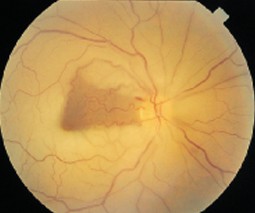Peer Reviewed
Feature Article Ophthalmology
Sudden loss of vision: a GP’s guide to the many causes
Abstract
Sudden loss of vision at any age is an alarming symptom that usually results in a rapid presentation for medical opinion. General practitioners need to have some understanding of the possible causes, an examination technique and a knowledge of conditions that require urgent referral for specialised care.
Key Points
- For a patient with a sudden visual loss, the GP needs to determine whether any treatment should be administered immediately or if urgent referral to an ophthalmologist or neurologist is required.
- An urgent ophthalmological examination is essential for any patient who presents with a sudden visual loss unless the cause is clearly neurological.
- Acute angle closure glaucoma produces rapid loss of vision in one eye. It is usually associated with severe pain (clearly localised to the affected eye), nausea, vomiting and haloes around lights. Urgent consultation with an ophthalmologist is required.
- Sudden painless loss of vision in one eye is the hallmark of central retinal artery occlusion. The occlusion occurs behind the optic disc, and causes such as emboli are not visible. If seen within minutes, the emergency treatment consists of massaging the globe, intravenous acetazolamide and paracentesis of the anterior chamber.
- Early diagnosis of giant cell arteritis is important because it is highly likely that the other eye will be affected within weeks if corticosteroids are not commenced. The prognosis for recovery is usually very poor.
Purchase the PDF version of this article
Already a subscriber? Login here.

